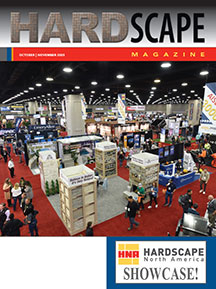Articles Written by Charles Vander Kooi
Materials & Equipment Estimating
By Charles Vander Kooi
Accurately estimating materials
When you're estimating materials, the goal is to come up with the amounts for which you will write checks. And at the end of this process, you should write checks for materials bought at wholesale cost, which is what you will put down for materials on the estimate sheet. Don't write down the cost from what you see on the drawings. Rather, list what you are going to buy in materials.
I love computerized estimating, however, I think it can turn estimators into lazy brains , especially when it comes to digitizers. Digitizers can take the material off of a drawing and put the quantity directly into a computer-estimating program without the estimator even having to insert the quantity into the bid. This can lead to problems because it's important to think through how much material you'll actually be needing in the field, not how much you need on paper.
You can't buy .5' of pipeFor example, I have seen estimators produce bids that show 1,113.5' of 2-inch pipe. This is what the digitizer took off of the drawings down to .5'. I asked the estimator, "Where are you going to buy .5' of pipe? In fact, since pipe comes in 20' lengths, where are you going to buy 13' of pipe? And, if you send out 1,120' of pipe to the job, you are going to get a call before that job is finished. Do you know what that call is going to be about? They need more pipe on the job. They will need more pipe on the job because 2 things that need to be on the same pipeline were 17' apart. The field person went and got a 20' length of pipe, then cut 3' off of the end to get their 17'. What did they do with the leftover 3'? Put it in their back pocket to see if they could use it somewhere else on the job? No, they threw it into the trench with the other 17' and covered it all up. Who paid for the 3' of pipe? You, the contractor, paid for that 3'. "
That is why an exact quantity taken off of the drawings by a digitizer or by hand should be put into the bid. Rather, put down what you need to buy. If an estimator is doing a good job on their take-offs, they should be able to order the materials right off of the estimate sheet and never get a call from the field saying that they need anything. If such a call does come in, whoever did the estimate knows immediately that they did not take off the materials properly.
Don't forget guaranteesIn estimating materials, consider any guarantees or warranties you must provide to the owner. When you are asked to guarantee something, especially plant material, you are going into another business. You're insuring the livability of those plants wherever they are planted. If you're going to be in the insurance business, you'd better think like an insurance person.
Let's say that I, a 50-something male with no accidents or tickets for the last 10 years, was talking to my insurance agent about insuring me to drive a 1998 truck. While we are talking, a 16-year-old male with pink, yellow, and red hair drives up in a brand new Corvette. The ink is still wet on his driver's license. He wants to know what insurance will cost him.
Will the insurance agent quote us the same price for insurance? Of course not. The 16-year-old is a much greater risk in that Corvette than I am in a 1998 truck. You have to make similar distinctions when guaranteeing materials.
Killing plantsHere in Colorado , we have certain hard-to-kill native plants (which are just 2 steps away from being weeds). The risk on those kinds of materials is very low; as low as 2% to 3%.
On the other hand, we also have ponderosa pines that grow fibrous vital roots that break off when the tree is uprooted. So they don't transplant well. Ponderosa are also extremely sensitive to dogs. Given these factors, you can expect to lose about 30% of the trees you plant.
I suggest you determine the risk or loss factor on each kind of material you will install, then add a percentage for loss to the wholesale price of that material before you put it on the estimate sheet. For example: A shrub that cost $7 with a 5% risk factor would be priced on the estimate sheet at $7.35. A tree costing $80, with a 30% risk factor would be priced on the estimate sheet at $104.
Remember, the goal of handling material on an estimate is to come up with the amounts you will write checks for. And that those amounts should include any guarantees and warranties you are offering.
Accurately Estimating Equipment
Equipment should never be estimated on a percentage basis. Some contractors take a percentage of labor and come up with an equipment cost. They have arrived at a magic number by figuring that if in a normal year their equipment costs are $60,000 and their labor is at $200,000, then equipment is 30 percent of labor.
Sounds reasonable, doesn't it? But let's set up a scenario and see how it works. Let's say that today you are bidding 2 jobs:
- One is labor intensive and will only require your light, inexpensive equipment.
- The other is equipment intensive and will require your more expensive equipment: Backhoe, trenchers, tractors, etc.
The labor on both jobs is $80,000.The actual equipment on the first is $10,000; on the second it is $30,000. If you were using that 30%, you would bid the first job's equipment at $24,000, too high a figure that may keep you from getting the job. On the second job your equipment costs would be $24,000, which would be $6,000 too low, buying you a job you'll wish you didn't have.
The most common way contractors bid equipment by a percentage is to include it in their overhead. The same example I used above will also hold true in that case because you will just be recovering equipment randomly by percentage.
Calculate equipment like laborIt's important to estimate equipment and cost it like labor. It is far too big a variable to be using a percentage for its cost recovery. The accountant's method using depreciation, maintenance, and gas costs is by far the best method come up with figures to cost out your equipment.
Let's use a pickup truck as an example. If you paid $9,000 for a pickup, you're financing it over 3 years and the total cost to you, including purchase price, tax and 3 years of interest is $12,480.
You have established a lifetime expectancy for your pickup of 3 years. At 40 hours per week, that's 2,080 hours per year or 6,240 lifetime hours. If you divide the cost of $12,480 by the 6,240 hours it equals $2 per hour you will need to charge to replace that pickup.
Next, we want to figure its maintenance, license, and insurance costs. Because this varies depending on your location and how you approach your maintenance, I suggest you estimate 3 years of cost.
Don't be ridiculously low. Put that pickup in the hands of an employee and be as honest as you can about how they'll treat it and how much it will cost you to keep it on the road. Let's say you have arrived at a 3-year cost of $6,240. Divide that figure by its lifetime hours of 6,240, which equals $1 per hour, which is what you need to charge to maintain that pickup.
Next, we want to figure its average gasoline consumption over a week. If you think your pickup will consume 30 gallons per week at $2 per gallon, that equals $60 per week. At 40 hours that's $1.50 per hour. The total cost is $4.50 for the pickup.
Here, I always apply my favorite principle, round up. I always round my equipment costs up to the nearest 50¢ per hour. Therefore, I would use $5 an hour for the pickup. If you would rather use a per-day price, simply multiply the hourly price by 8 hours to arrive at $40 per day.
Test against rental ratesI always recommend that a contractor not run out and use those figures until he has put them to a 2-step test.
First call your local rental equipment company. See what rates they are charging for the same type of equipment. Be sure to see if they have included fuel. If they haven't, add your fuel costs to their prices.
Remember, the rental people have included overhead and profit in their prices, whereas you are trying to arrive at costs before your overhead and profit. Consequently, your prices should be lower than theirs.
Realize that these people are in the business of knowing the costs of equipment. They live and breathe life expectancies and maintenance costs. If your prices are considerably lower or higher than theirs, say by 30%, guess who's wrong-and it's not them. Reevaluate your numbers.
Second, go to your local highway department and see if they have a book titled, Equipment Rental Rates for Force Account Work . This book is our industry's Blue Book of rates. So whenever a highway department wants extra work done on a job they don't ask you to work up a quote. They simply tell you to do the work and keep track of your costs. Therefore, you should know what the standard is for your area so you know what to charge.















